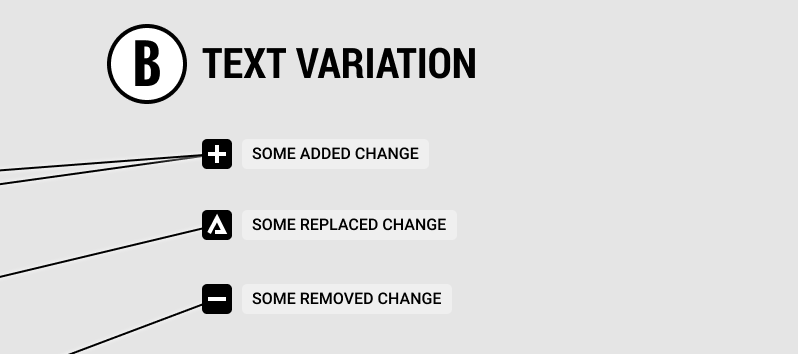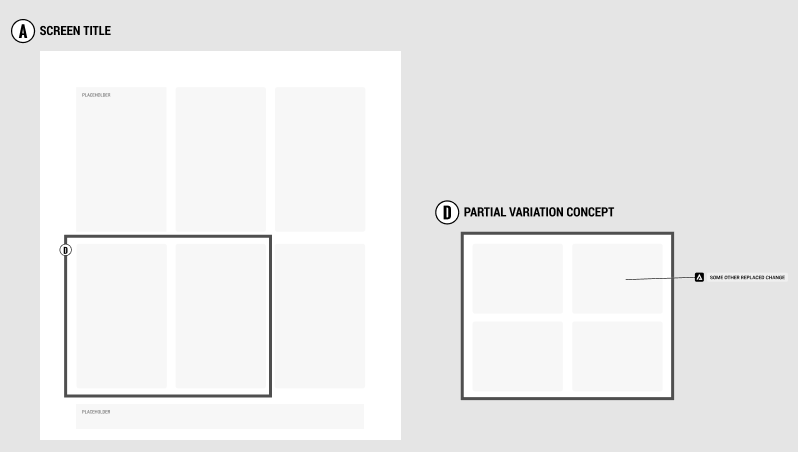What's New In Catalyst 1.2 - Change Types & Partial Concepts
I'm continuing to make gradual improvements to the freely available GoodUI Catalyst Canvas for Figma. The purpose of this template (which I use on real projects by the way) is to encourage others to design better experiments. This minor release focuses on two ways of actually doing less design work, with some improvements to clarity. Here is what's new in the latest version.

1. Improved Clarity With Three Basic Change Types
Not every change needs to be designed in detail. I've seen countless experiment ideas (ex: copy changes) expressed as simple text. For this reason, Canvas now supports different types of text based changes. These are essentially simple text annotations on top of an existing screenshot to help team members understand your proposed change.

To maintain clarity and minimize confusion, these text variations can be expressed with three change types: ADD, REPLACE or REMOVE - which I hope should cover most cases.
2. Less & Faster Design With Partial Variation Concepts
Continuing along the lines of minimizing any unnecessary design work, I've also introduced a simple idea of using partial concepts. Imagine that you only wish to design an experiment which changes a small area of an existing screen. Partial concepts are aimed to help you define only that particular area while leaving out all remaining elements - thus saving time by not having to "redesign" them. As a secondary benefit, this should also help set focus on the proposed change.

Download Catalyst And Design An Experiment With It
I'd love for you to actually duplicate and use Catalyst to design real experiments. Using it, I think might be the best way of improving it further. And if you have a question or suggestion, feel free to share your actual Figma working file with me (and I might be able to provide feedback).
What's Next?
Some other ideas on the horizon which I'm already working / thinking about:
- creating a better "base UI set" to concept and wireframe with
- support for "brainstorming" or exploring multiple ideas before deciding how to structure the experiment(s)
- expressing evidence and making predictions using all the available data from patterns
- begin tying the existing and growing set of templates to work with Catalyst
Have Comments Or Suggestions?
Please leave your comment or suggestions below on how to make Catalyst even better. :)
 Jakub Linowski on Aug 05, 2020
Jakub Linowski on Aug 05, 2020
Comments